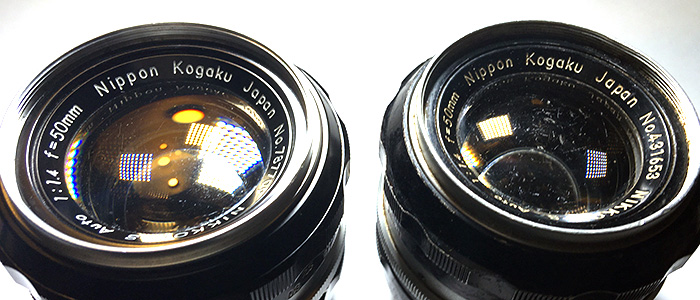I’ve received some questions regarding some of my statements in two of the articles regarding defects legacy lenses tend to suffer [first; second], and as I now happen to be in the possession of two otherwise almost identical copies of a lens with one of the lenses being in pristine condition, and the other having significant damage to the lens’ front element, I can now offer visual proof of what I said earlier, namely that scratches and dents in a lens’ element do not show up as such, but that they have an effect on the lens’ sharpness, contrast, and flare-proneness.
Obviously, when the lens element’s are more than a little damaged, the cumulative effect can be quite pronounced.
The lenses
The two lenses I’m going to use for this illustration are my two samples of the Nippon Kogaku Nikkor-S 50 mm f/1.4. Both are Nikon F-type lenses (Pre-Ai) , both are single-coated, and are otherwise very similar except that the older (serial number 431653, manufactured ca 1965) has a 6-bladed aperture and the newer (serial number 787709, manufactured 1969 or 70) has a 7-bladed aperture. Both lenses have 7 elements in 5 groups, a 46° field-of view, a 160° focus throw and a minimum focusing distance of 0,6 meters.
Both lenses are mechanically in excellent shape, but optically the story is quite different, as the newer is basically in pristine shape, while the older of the samples has accrued a number of severe scratches on the front element (the optical path of the lens is otherwise surprisingly clean). The lenses will henceforth be referred as
• ‘damaged’, and
• ‘mint’
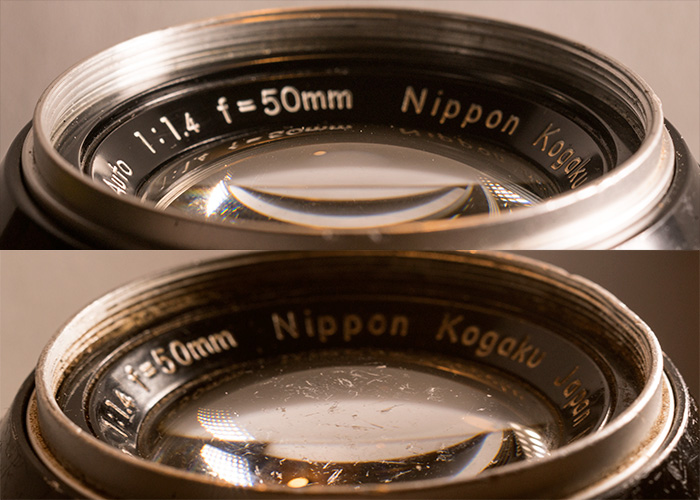
Bottom: ‘Damaged’ Nikkor-S 50 mm f/1.4
Testing procedure
All shots were taken on a Nikon Df camera using aperture priority, in RAW, at ISO 100 and AWB. All shots were taken on a tripod with a 5 second delay to eliminate shake. All shots were focused in live-view wide-open. After stopping down, shots were not refocused. All pictures below are (unless stated otherwise) only converted in ACR Default and cropped or resized.
Four test sequences were shot, illustrated by the resized images below:

Nikkor-S (damaged), f/5.6; 0,6 sec; ISO100

Nikkor-S (mint), f/1.4; 1/250 sec; ISO100
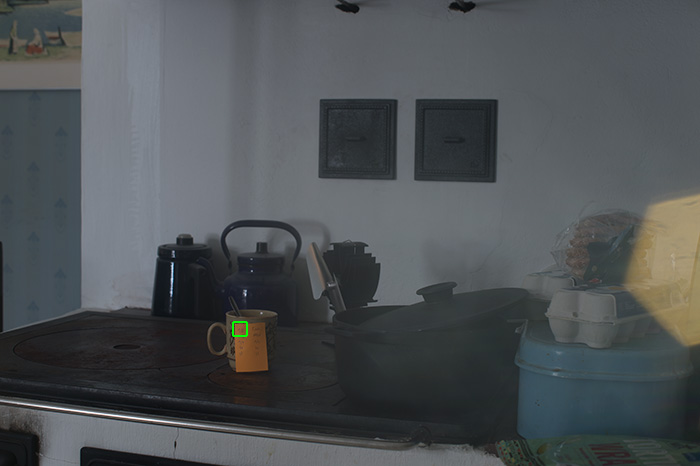
Nikkor-S (damaged), f/4; 0.3 sec; ISO100
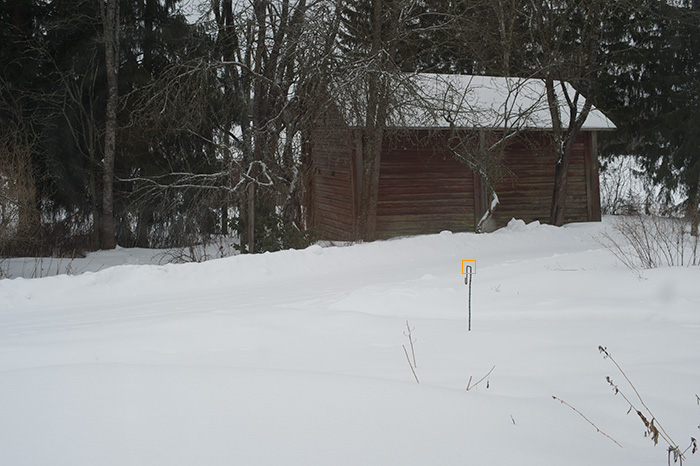
Nikkor-S (mint), f/11; 1/40 sec; ISO100
Scene 1

As is quite obvious from these 8 samples, the damaged lens produced significantly lowered contrast, while its ability to reproduce detail (resolution) is not as badly affected, except wide open, where even a loss of resolution is visible. Whether loss of contrast can be compensated for in post is something we’ll return to.
Scene 2
First off, I obviously overdid the power of the light-source, and should have used a less powerful flashlight. When evaluating flares, crops make little sense. Instead, let’s have a look at resized shots instead. First: wide open.
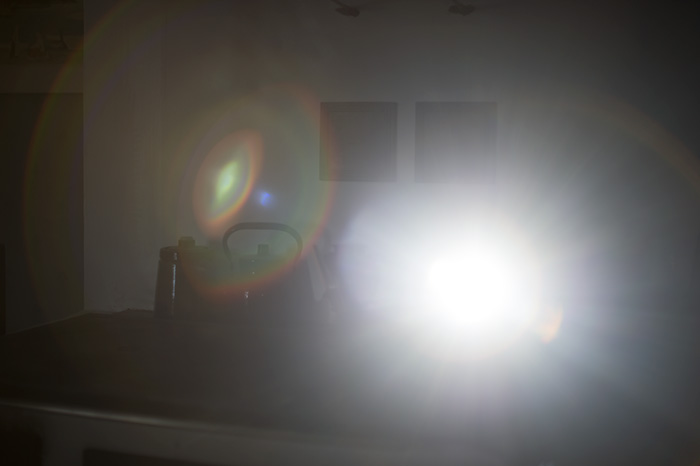
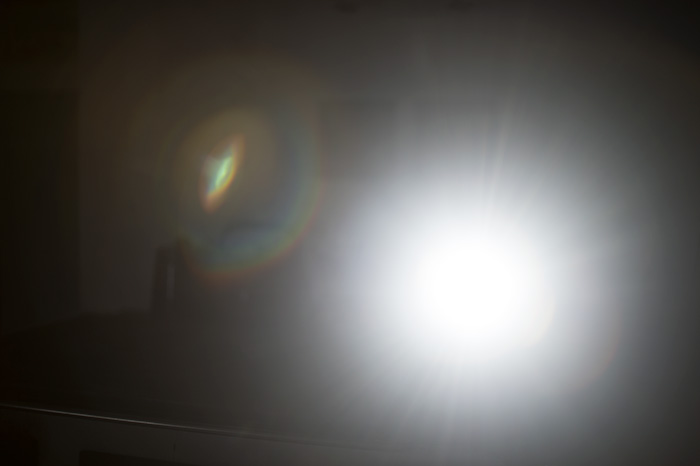
Ouch. Neither of the lenses are multi-coated, but considering that my light was a tad too powerful, I suspect even lenses with the best, modern coatings would have struggled.
That said, it is quite clear that the damaged lens suffers clearly worse: The ghosting pattern is distorted, and the veiling flare is extreme (the retro coffee pots on the left are hardly discernible). Also, I find it noteworthy that the damaged lens has recorded a significantly faster shutter speed (which indicates that there is a lot of light-scatter within the lens).
Next, at f/4 (stopped down by three stops).
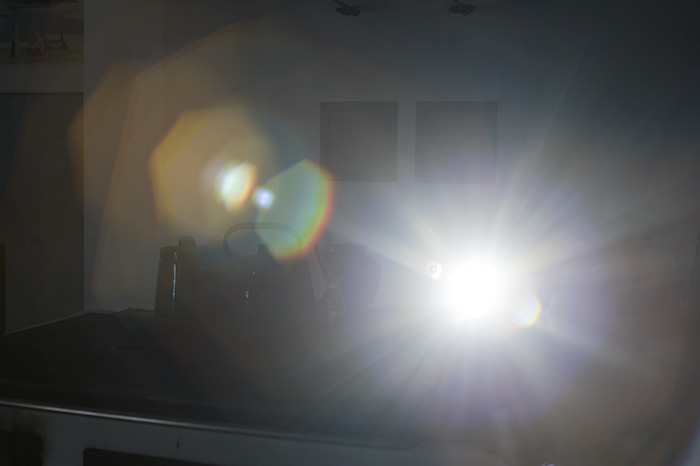

The ‘mint’ lens improves somewhat, and produces a quite pretty ghosting pattern, but veiling flare still makes the image unusable (unless the point is to show flaring).
It is also quite interesting to see, that whereas the ghosting patterns on the ‘mint’ lens are quite clean, those of the ‘damaged’ lens show clear blemishes. How about stopping down almost all the way?
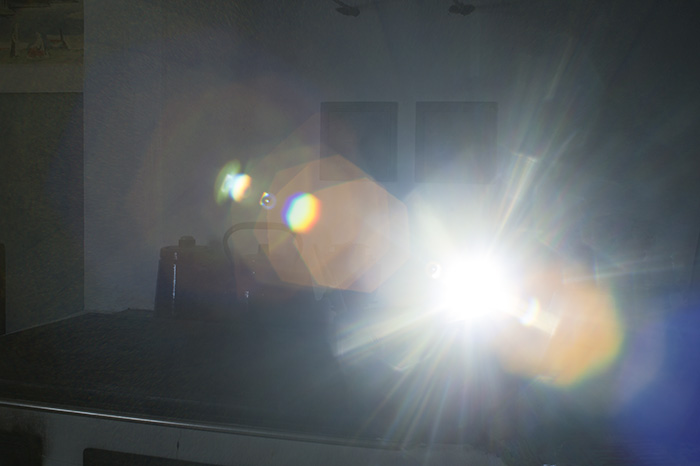
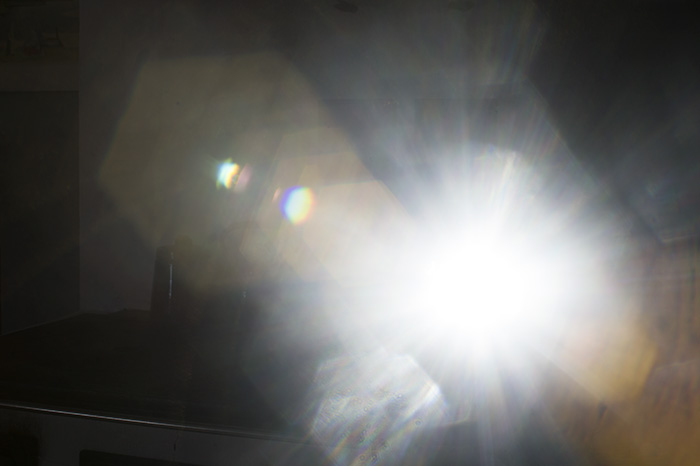
And stopping down to f/11 just shows the same story continuing. While the ‘mint’ lens shows clearly less veiling flare, it still pretty much subsumes the entire picture and when going to the damaged lens, it gets even worse. Also, again the ghosting pattern of the ‘mint’ lens considerably cleaner, whereas the ‘damaged’ lens has ghosts even where there should – logically – be none.
As a side note, the stopped down images highlight the differences between a 6- and 7-bladed aperture.
As a summary – with a strong light source in the frame, damaged lens elements clearly make controlling flare a much harder task. Especially the egregious veiling flare of the ‘damaged’ lens is very conspicuous. That said, there is something about the imagery coming from the damaged lens, that people may find attractive.
Next, we’l find out if there are significant differences to be found when the light source is significantly outside the frame.
Scene 3
Again, we’re going to look at resized shots instead of crops. First: wide open.
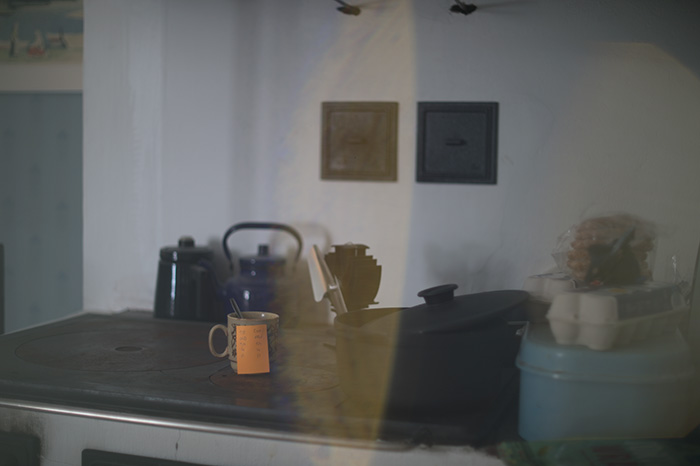
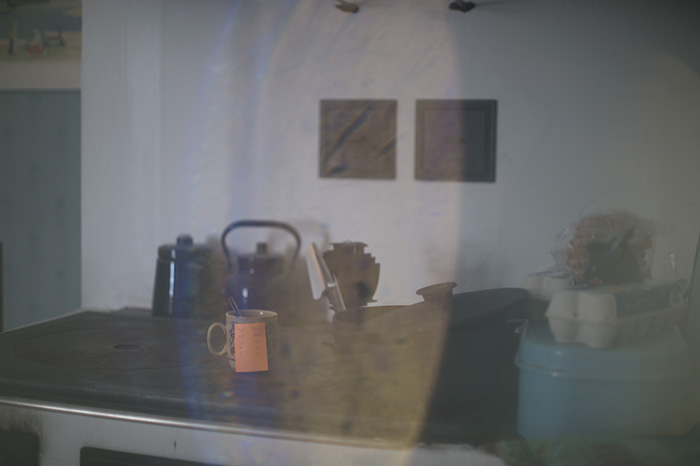
Both shots show a big ghosting pattern in the middle, but the ghosting pattern on the ‘damaged’ lens is significantly bigger and shows some signs of the various dents and scratches on the lens’ elements. The ‘damaged’ lens also again shows signs of veiling flare, but honestly nowhere as pronounced as earlier (or later for that matter).
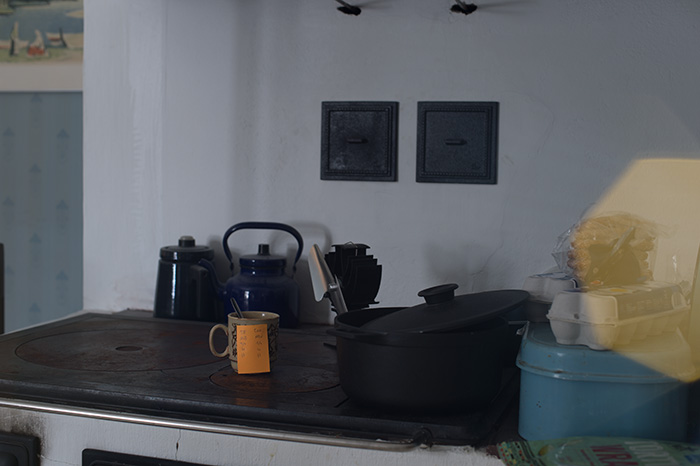
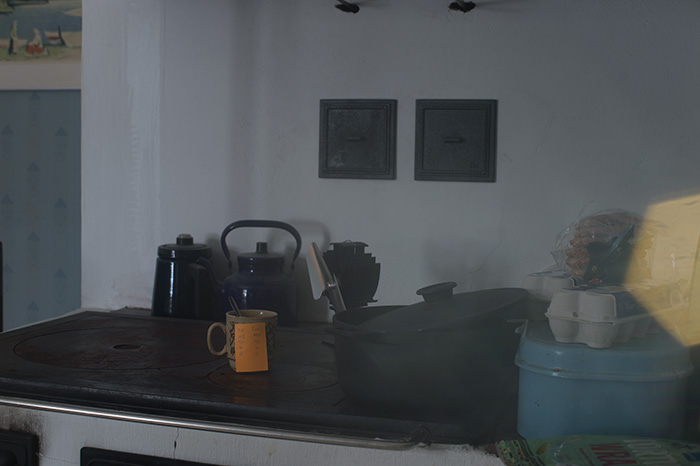
The ‘mint’ lens shows a very picturesque, big, septagonal ghosting pattern at the right-hand edge, but shows otherwise very little ill effects of the Maglite pointing at the front lens. The same cannot be said for the ‘damaged’ lens, that not only shows a hexagonal ghost, but also shows significant veiling (and attendant loss of contrast) throughout the entire right-hand -half of frame.

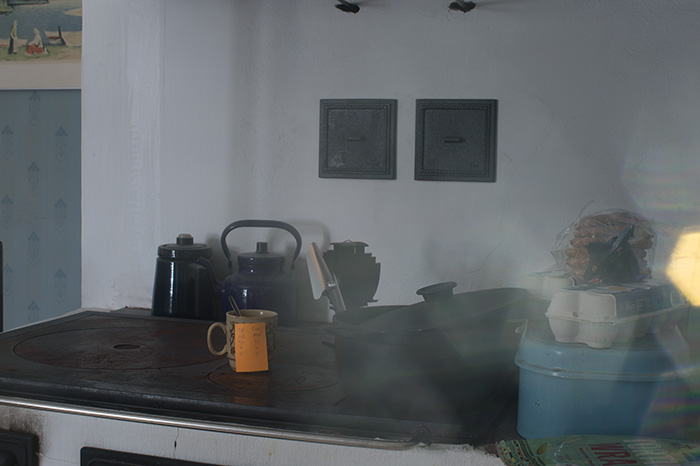
At f/11 the story is largely the same as earlier, but the details vary. Interestingly, it seems that the dented front lens of the ‘damaged’ lens produces shadows of ghosts in places where an undamaged lens would not.
Quite clearly, stopping down does not offer a remedy for flares in the case of a severely damaged lens.
Scene 4
This is just a boring old test scene predicated by the inclement weather and the lack of a decent tripod. Both lenses were focused on the ‘hook’ (in live view), and the crop displayed in the centre is an off-centre crop useful for showing the general contrast in the shots of the ‘mint’ and ‘damaged’ lenses
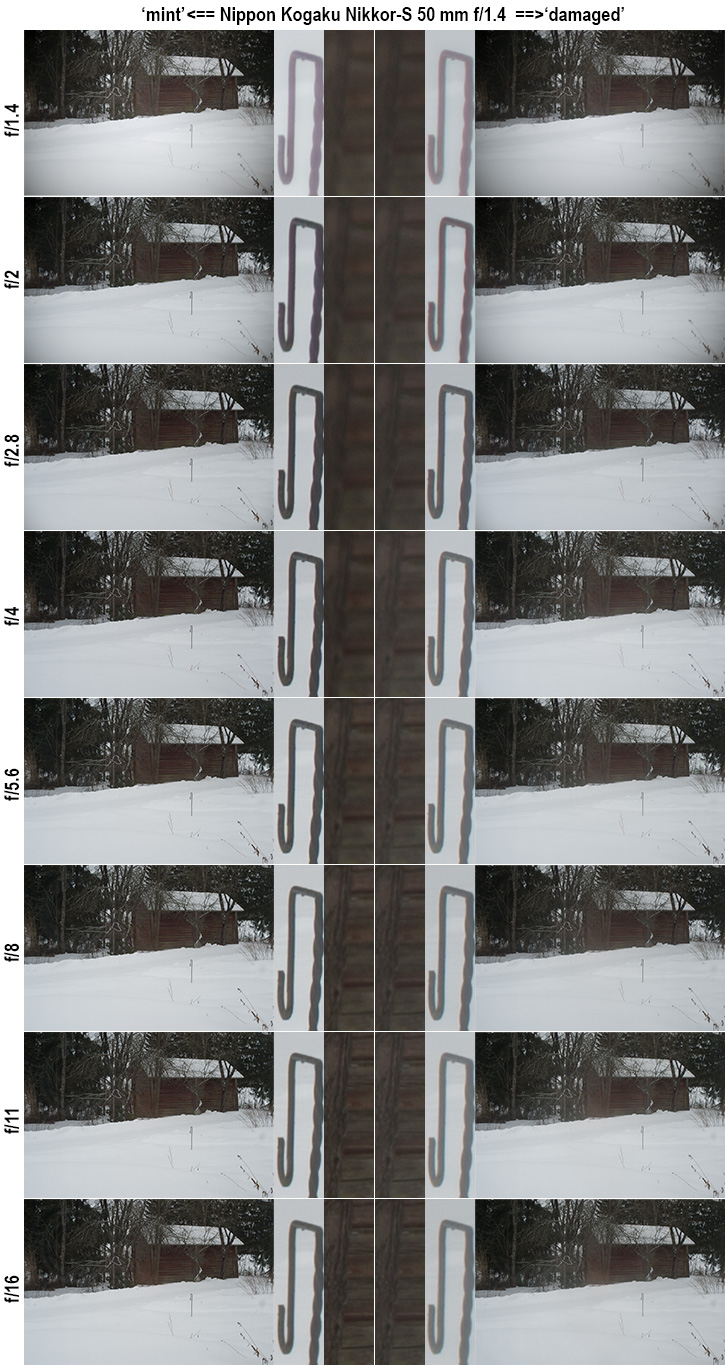
These test shots (while not replete with artistic merit) clearly show that the damaged lens is – for the lack of a better term – contrast-limited. Looking at the wide open shots, there is not a huge difference. But while the mint lens shows significant improvement when stopping down and is basically perfect at f/4 (where after depth-of-field continues deepening), the same improvement is simply not evident in the damaged lens. Instead, the damaged lens reaches its contrast plateau at f/2.8 (and in doing so does not reach the mint lens’ contrast at f/2) and simply does not manage to improve from there. Moreover, looking at the crops from the ‘hook’ versus the crops from the ‘log wall’ (centre columns) it looks like the contrast-handicap is proportional to the amount of contrast in the crop itself: the more contrast should be there, the more its lack is obvious.
While the small resized samples are admittedly very tiny, also they show that this lack of contrast in the details has a tangible effect on the pictures in their entirety. See also the example pictures below.
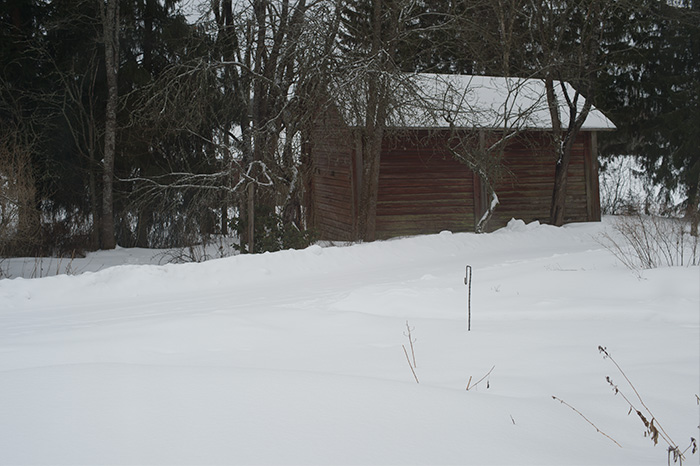
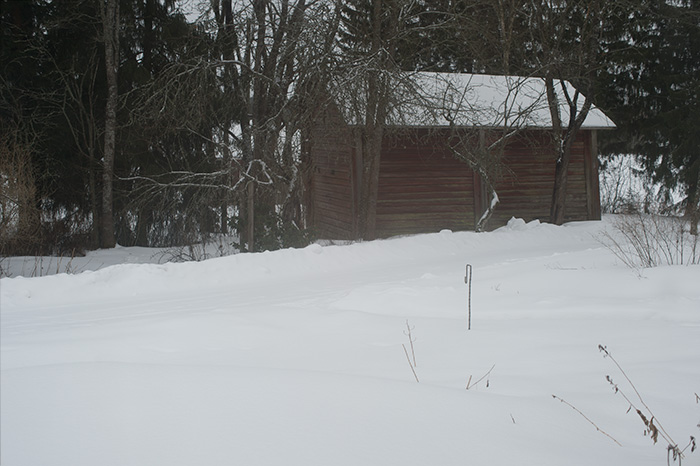
Summary
Based on these above – unprocessed – shots it is quite evident that the ‘damaged’ lens loses a bit in sharpness, loses contrast significantly and is prone to quite extreme veiling flare and unpredictable ghosting. While it is therefore obvious that the damage the ‘damaged’ lens has accrued does indeed have a significant effect on the overall image quality and may considerably limit the lens’ overall usability, I want to offer three worthwhile considerations.
Firstly, normally when you are considering procuring a lens with some damage to the optics, you will in all likelihood not be dealing with this level of damage. I remind you to re-examine the picture of this lens’ front element, and asking yourself how many lenses you’ve seen that have had this level of damage. I wager: not many. Considering that the image degradation evidenced here by this lens is cumulative, a lens with only half the damage compared to this will also perform a lot better.
Secondly, while a lens such as the ‘damaged’ sample certainly does not cut it as your only lens, it might offer utility as a specialty lens, for instance thanks to its quite outrageous flaring and ghosting.
Finally, while I’ve put you to sleep with the drab imagery here (sorry, those are the RAW colors of late winter in Finland on an overcast day), that does not mean that this is all that is there. In fact, while the damaged lens clearly retains its central weaknesses, a few tweaks in post manage to improve the results quite radically (all tweaks were applied to the entire frame, no masks were used).
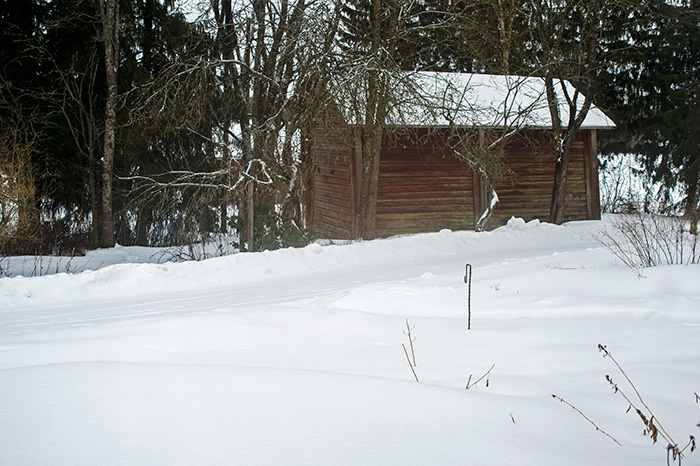
after only a few minutes in post. Feel free to compare with the above shots.
Therefore, if you are into experimentation, egregious flare, or lo-fi photography, a damaged (even severely damaged) lens might be a worthwhile investment, especially if you are able to make sure the damage is reflected in the price.
P.S. As JAPB is a budget affair, we’re currently not paying for unlimited bandwidth. Therefore, we’re also not making the ≈750 megs of raw files available for your inspection. Should you, however want to examine those in detail, send us a message.
